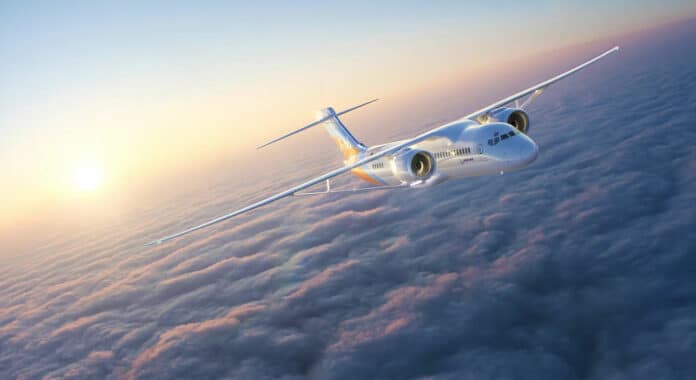As NASA and Boeing work together on the X-66, the first X-plane dedicated to reducing aviation emissions for a net-zero future by 2050, they are already envisioning the aircraft soaring through the skies. The early stages of production take shape for a plane that could have such an impact on the environment and our future.
The latest rendering of the aircraft showcases its unique extra-long and thin wings, which are supported by diagonal struts, known as the Transonic Truss-Braced Wing concept. According to reports, this design, when combined with other advancements in propulsion systems, materials, and systems architecture, could result in up to 30% less fuel consumption and reduced emissions compared to today’s best-in-class aircraft.
NASA and Boeing are collaborating under the Sustainable Flight Demonstrator (SFD) project to transform the X-66 concept into a reality. The project will involve building, testing, and flying the X-66, and NASA will provide $425 million, while Boeing will provide $725 million for the initiative.
The SFD project aims to develop a new generation of more sustainable single-aisle aircraft, with the X-66 serving as a platform to test and validate the TTBW concept and other technologies that could be applied to future aircraft designs.
Boeing has already transported the MD-90 aircraft that will be turned into the X-66 to its Palmdale, California facility last year. It took the first steps toward building NASA’s newest X-plane after it began the modification of the McDonnell Douglas MD-90 platform.
X-planes are experimental aircraft that are used to test new technologies and concepts that could revolutionize the field of aviation. The X-1, X-15, and X-43 are some of the most famous ones, but NASA’s latest X-59 is also worth mentioning as it’s part of the QUESST mission to make commercial supersonic flight a reality.
The X-66, on the other hand, differs from the previous X-planes as it’s not focused on extreme performance but rather on improving efficiency and sustainability for everyday flights. This aircraft could positively impact the passenger experience by reducing noise, vibration, and fuel costs.
